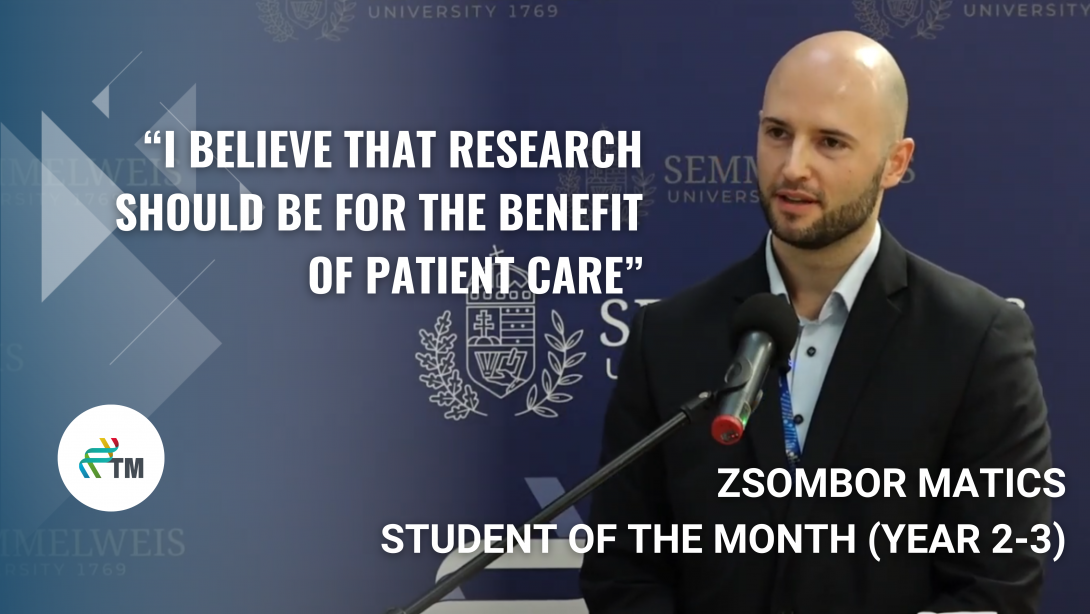
He is an excellent student from the Cardiology & Intensive Care Group, who researched the treatment of idiopathic pulmonary fibrosis in his first project. He recently published his article in the D1 journal eClinicalMedicine, and has been working on his second project focusing on pulmonary hypertension. In March, Zsombor Matics was named Student of the Month (Year 2-3) at the Centre for Translational Medicine.
Dr. Matics is a second-year Ph.D. student in the program of CTM, and in addition to this training, he works as an internist and infectology resident at the Department of Pulmonology, Semmelweis University. „I decided to pursue this Ph.D. training because I like the underlying concept of translational medicine, which is that research should be for the benefit of patient care. The idea for my research topic came from the fact that I provide treatment for pulmonary patients at the clinic, including some who are affected by idiopathic pulmonary fibrosis. It is a rare, incurable disease, and it causes a huge amount of suffering to patients. As an infectious disease resident, I have also experienced that respiratory tract infections alongside pulmonary fibrosis not only cause suffering for patients, but also increase mortality. That's why I thought that even if we can't cure the disease, we should at least reduce the suffering of patients as much as possible.”
In his research, Dr. Matics compared the effect of antifibrotic treatments on the incidence of respiratory tract infections in idiopathic pulmonary fibrosis. His meta-analysis was published in the D1 journal eClinicalMedicine. „I had co-authored articles before, but this was my first first-authored publication. Our results could help to improve the therapy of idiopathic pulmonary fibrosis. We already know that there are drugs reducing the incidence of infections, and ones that reduce mortality. Future research should investigate their combined use as an add-on therapy.”
In his second project, Dr. Matics is investigating the incidence of infections in patients with pulmonary hypertension who are on specific therapies for pulmonary hypertension. The aim of this research is also to find therapies that can reduce the risk of infections. After completing his Ph.D training, Dr. Matics would like to continue research, but his priority will be patient care. He wants to answer questions that arise in clinical practice and need to be solved.
(Emese Szabó)